Question
Part A : Theoretically , if you roll a 7sided die and variable x is the outcomes, the possible values that x can take are
Part A:
Theoretically, if you roll a 7sided die and variable x is the outcomes, the possible values that x can take are 1, 2, 3, 4, 5, 6 and 7.
- Write the probability distribution of x. These probabilities are the Classical (or the Theoretical) probabilities ( Chapter 5)
- Calculate mean, variance and standard deviation of x (using the probability distribution). ( Chapter 5)
Part B - Using Excel:
Let us assume you are rolling a 7sided die 25 times, 200 times and 1000 times. So you will have three data sets. To get the data you do not have to roll a die, use EXCEL with the command =RANDBETWEEN(1,7). Which will give you a random number between 1 and 7. Copy this 25, 200 and 1000 times to get the three data sets.
- Prepare frequency distribution table, using x as the outcomes 1, 2, 3, 4, 5, 6 & 7.(Chapter 2)
- Calculate relative frequencies. ( Chapter 2)
- Calculate the percentages. (Chapter 2)
- Draw a bar graph for the frequency distribution. (Chapter 2)
- Draw a dot plot for the frequency distribution. (Chapter 2)
- Draw a pie chart. (Chapter 2)
- Calculate sample mean, mode, variance and standard deviation for each data set. (Chapter 3)
- Calculate the three Quartiles, the IQR and Prepare Box-and-Whisker plot. (Chapter 3)
- Find the Probability for each x ( 1, 2, 3, 4, 5, 6, 7) using relative frequency.
(Relative frequencies will give P(1), P(2), ......P(7).Where P(2) is the probability that the outcome is 2 These values are the Empirical (or the Experimental) Probabilities.)(Chapter 4)
Part C :
Lets compare Part A values with results you got for Part B ( for each of the data set)
1.Compares the Probabilities. (Part A-1 and Part B -9 )
2.Compare the Mean, Variance and the standard deviation. (Part A-2 and Part B-7)
Part D :
For all the three data sets find the 95% confidence interval for using. (Chapter 8)
1.The population standard deviation found in Part A - 2 and the Z-distribution.
2.The Sample standard deviation found in Part B-7 and the t-distribution
Part E:
Conclusion
Write about your findings, mainly discuss how the shapes of the graph and the sample statistics change as the sample size increase? (You can write the conclusion at the end of the project or at the end of each graph or findings.)
These are the instructions
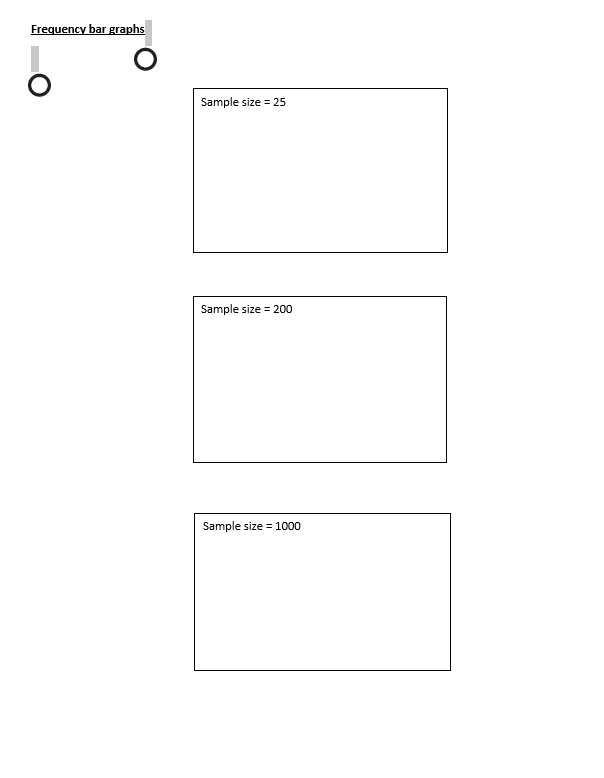

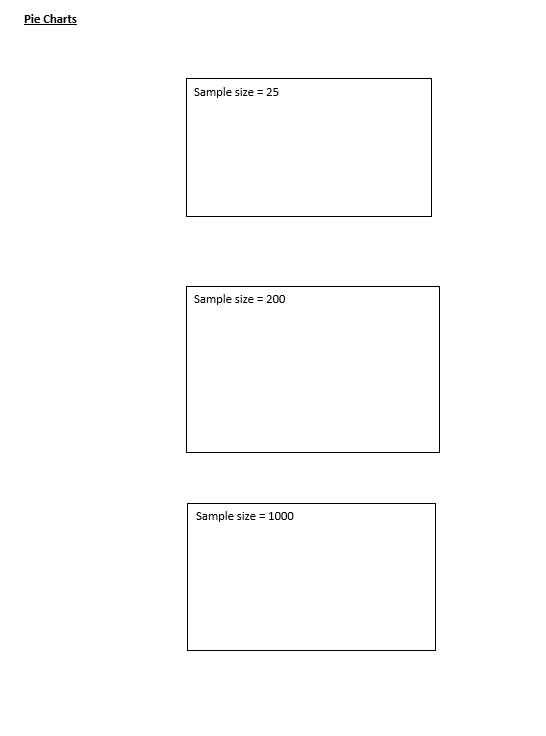
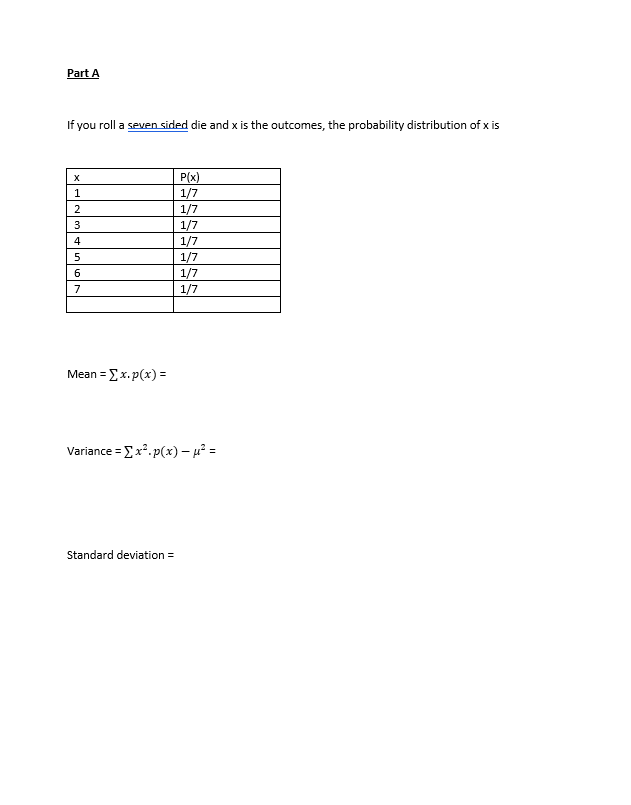
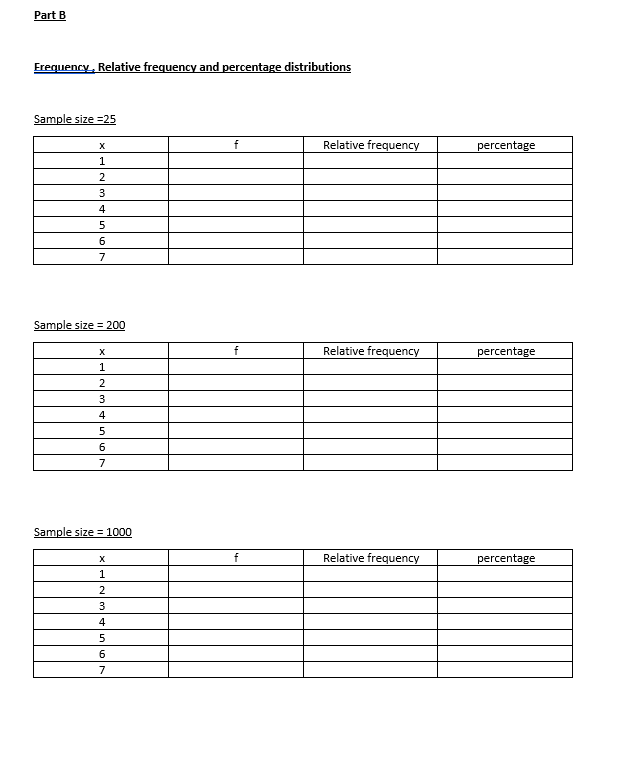
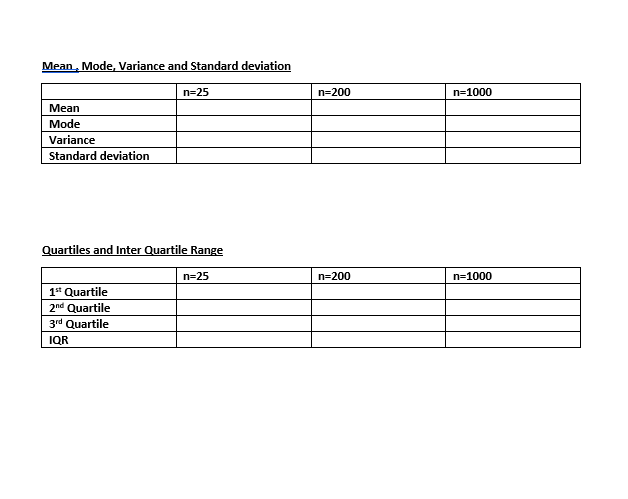
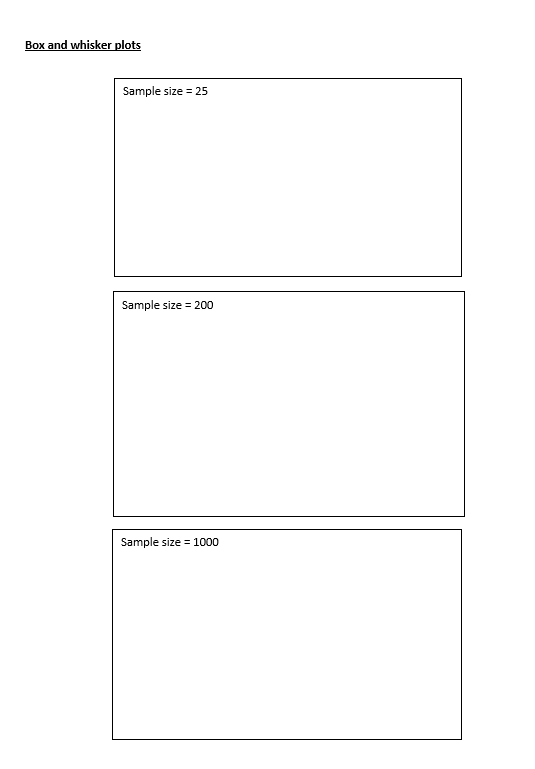
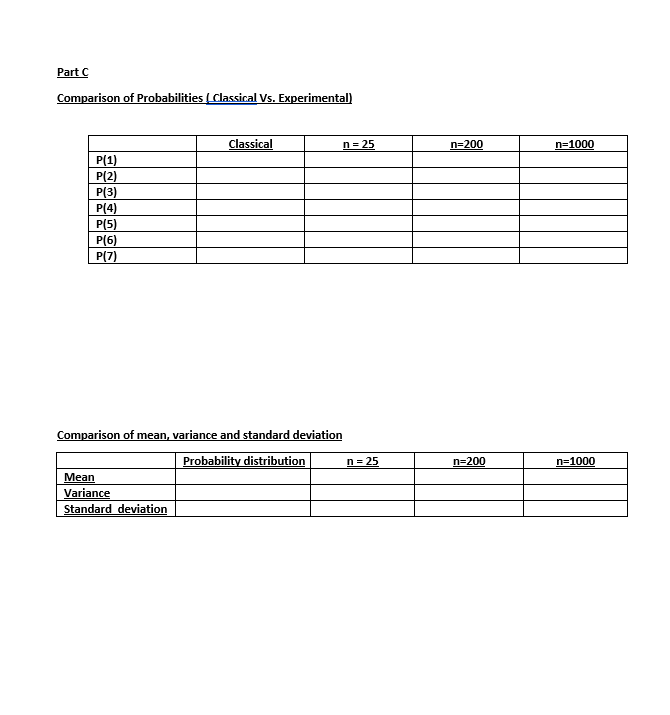
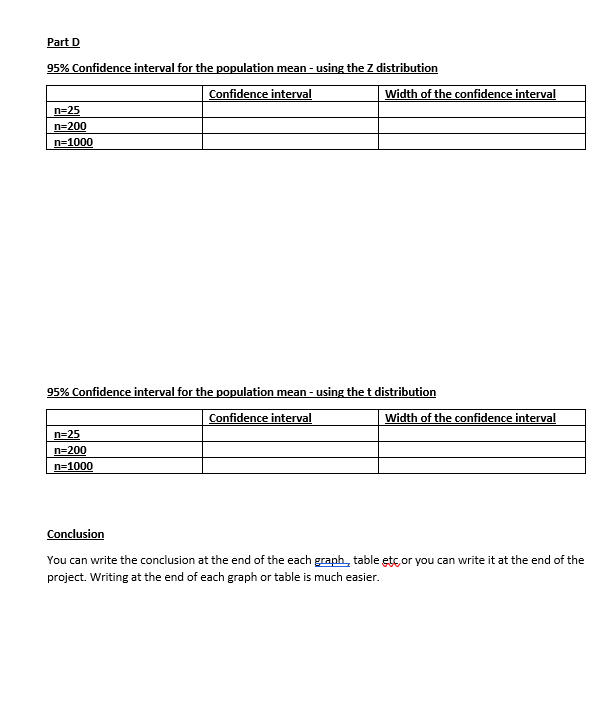
Step by Step Solution
There are 3 Steps involved in it
Step: 1

Get Instant Access to Expert-Tailored Solutions
See step-by-step solutions with expert insights and AI powered tools for academic success
Step: 2

Step: 3

Ace Your Homework with AI
Get the answers you need in no time with our AI-driven, step-by-step assistance
Get Started


